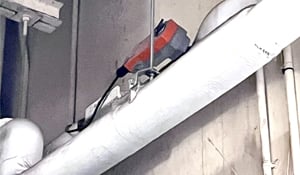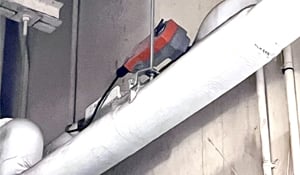What is Rangeability vs. Turndown Ratio, and What Does it Mean for Control Valve Selection?
Regarding control valve sizing and selection, Cv gets a lot of attention as the capacity to flow to design loads at the desired pressure drop, but this is only part of the picture. Going deeper into valve control characteristics, the terms Rangeability and Turndown Ratio are used, sometimes interchanged; however, there is an important distinction.
Rangeability defines a predicted minimum flow through a control valve at low loads expressed as a ratio of maximum controllable flow to minimum controllable flow. Globe valves serve as a good example to explain the concept. A globe valve stem has a contoured plug and a disc that operates against the seat. The major diameter of the plug is always slightly smaller than the inside diameter of the seat to keep the valve from sticking. This clearance creates the “minimum controllable flow,” below which flow would stop. The valve can only control from the maximum flow down to this minimum flow. The important point to remember is rangeability is a characteristic of the valve itself, measured under specific laboratory conditions, following recognized industry standards.
Rangeability = Maximum Controllable Flow/Minimum Controllable Flow
Take two valves, the first valve with a rangeability of 100:1 and the second with a rangeability of 300:1. The expected result is that the valve with the higher rangeability would provide a much smaller minimum flow than the valve with a rangeability of 100:1. In practice, this is not necessarily true. To fully understand this concept, Turndown and Actuator Resolution must also be factored into the discussion. By definition, rangeability refers to the valve body only. The turndown factor of the valve refers to the operation of that valve (with actuator) installed in a system as a ratio of the maximum usable flow to the minimum controllable flow.
Turndown = Maximum Usable Flow/Minimum Controllable Flow
Instead of a predicted value (like rangeability), turndown provides an actual measure of the valve's ability to control flow by rating the maximum usable flow instead of the full controllable flow. The system where the valve is placed may not use the maximum controllable flow available with that valve. It will only use what is needed – therefore, the maximum usable flow. It is still good to have a high turndown ratio for a valve. However, a crucial fact to consider is that the turndown ratio is limited by the resolution of the actuator. Electronic direct coupled actuators typically have a maximum resolution of 100:1. This typically is the best resolution of any actuator-electric or pneumatic. If the actuator resolution of 100:1 and coupled to a valve body with a rangeability of 300:1, the result is 100:1 turndown. The valve/actuator assembly is limited by the limiting factor of the actuator resolution. Therefore, the best turndown ratio with a valve/actuator combination is typically 100:1.
Explanation of resolution of the actuator:
2- 10 VDC control range = 8 volt span
Belimo actuators require 80 mV to advance in the same direction. As a result, the actuator will not respond to infinitesimal changes in voltage, resulting in excessive movement and premature failure.
8 volt = 8000 mV
8000 mV/80 mV = 100:1 resolution
Knowing the actuator's resolution is necessary to determine how it will operate in the system.

